The resistor is a component that resists the flow of current. It doesn’t do anything actively, so it’s called a passive component.
Sounds boring and pretty useless, but it’s actually an extremely useful component. Once you know the basics of the resistor – and how it works with currents and voltages in a circuit – you’re in charge 😎.
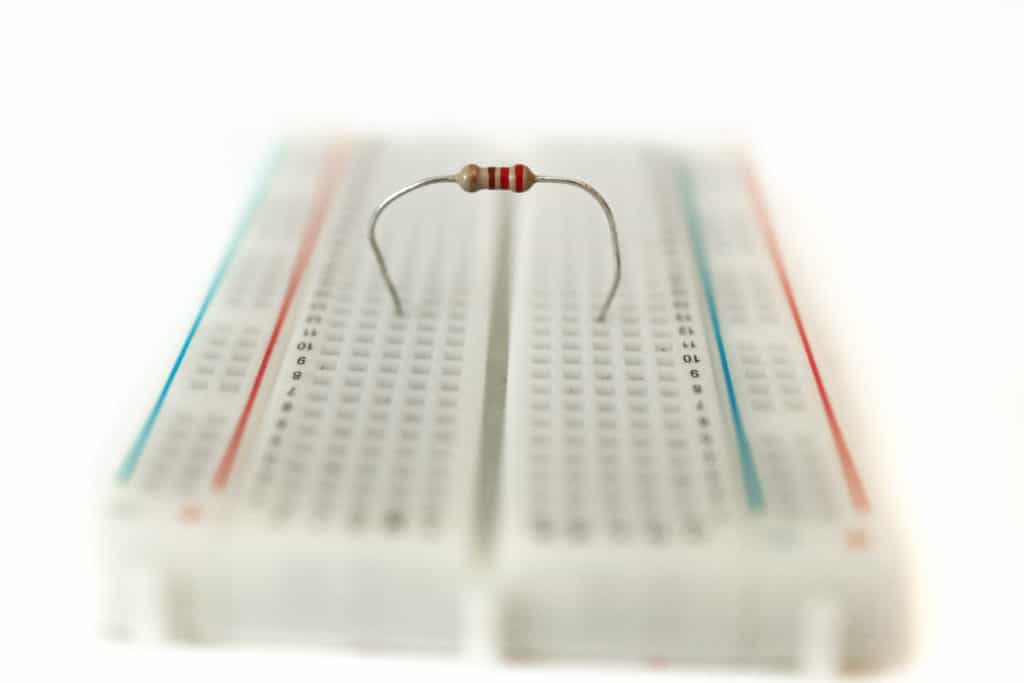
Here’s something that’s important to know about the resistor:
The amount of current flowing into a resistor is exactly the same as the current flowing out of it.
That’s something that a lot of beginners will argue against. “If the resistor reduces current, there must be less current coming out of it, no?” And because they get this wrong, they have a hard time understanding circuits in general.
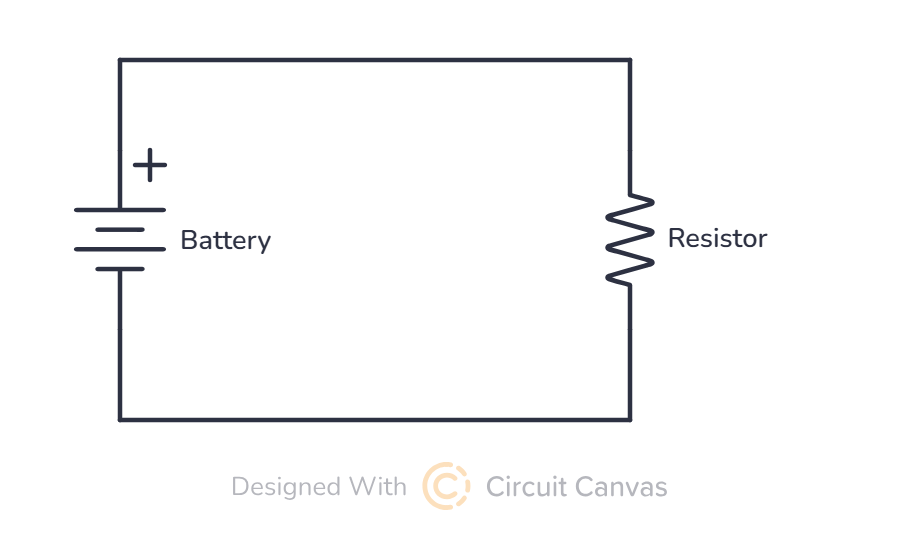
But here’s the thing:
The resistor reduces the current in the whole circuit. If you add a resistor in series with a circuit – the current in the whole circuit will be lower than without the resistor.
What Is a Resistor?
A resistor is nothing magic. Take a long wire and measure the resistance, and you will realize that resistance is just a normal property of wires.
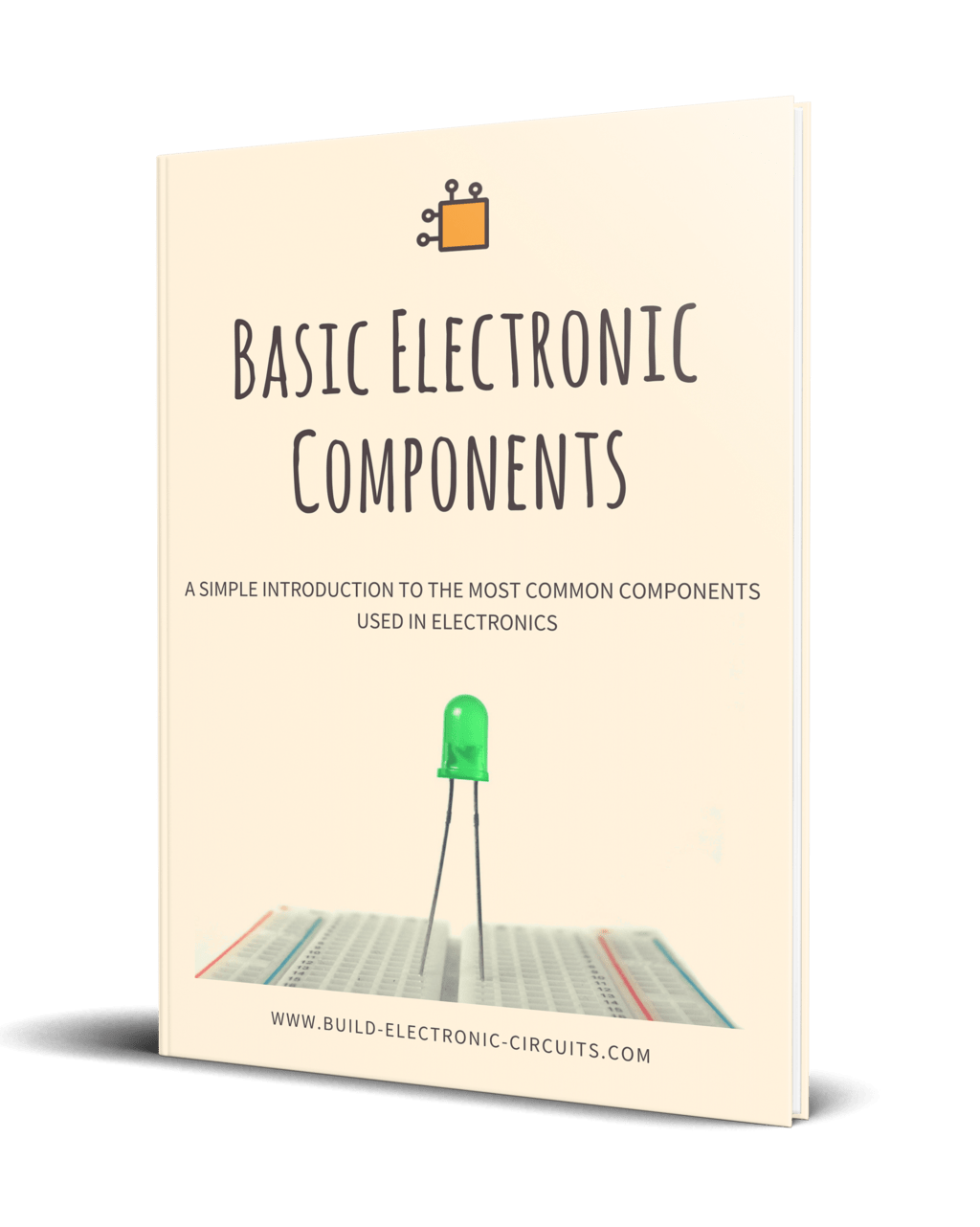
Get Our Basic Electronic Components Guide
Learn how the basic electronic components work so that circuit diagrams will start making sense to you.
Some resistors are made up of just that – a long wire (the wire-wound resistor)
But you can also find resistor types that are made of other types of materials. Like carbon or metallic film.
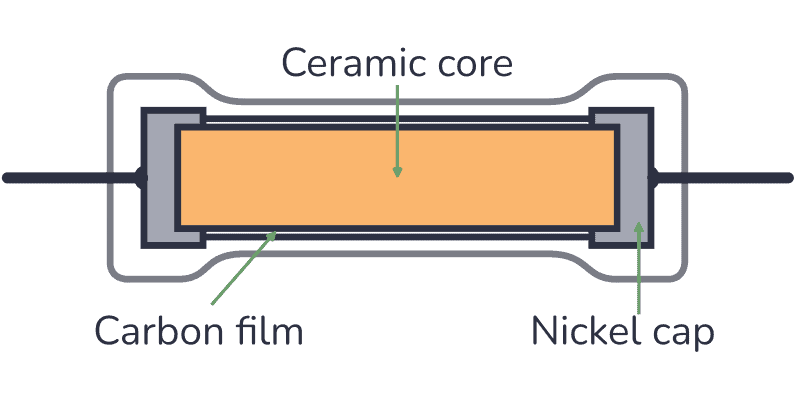
A material with no resistance at all lets current flow freely. The more resistance a material has, the harder it is for current to flow through it. So resistance is just a measurement of “how bad” the resistor is at letting current flow through it.
How Do Resistors Work?
The resistor is a passive device and doesn’t do anything actively to your circuit.
It’s actually a pretty boring device. If you add some voltage to it, nothing really happens. Well, maybe it gets warm, but that’s it.
But, by using resistors, you can design your circuit to have the currents and voltages that you want to have in your circuit. And in electronics, everything happens because of currents and voltages:
If you set the right voltage on the wires of a motor it will start spinning. If you set the correct current through a Light-Emitting Diode (LED) it will light up.
So the resistor gives you, the designer of circuits, control over what happens in the circuit! How about that?
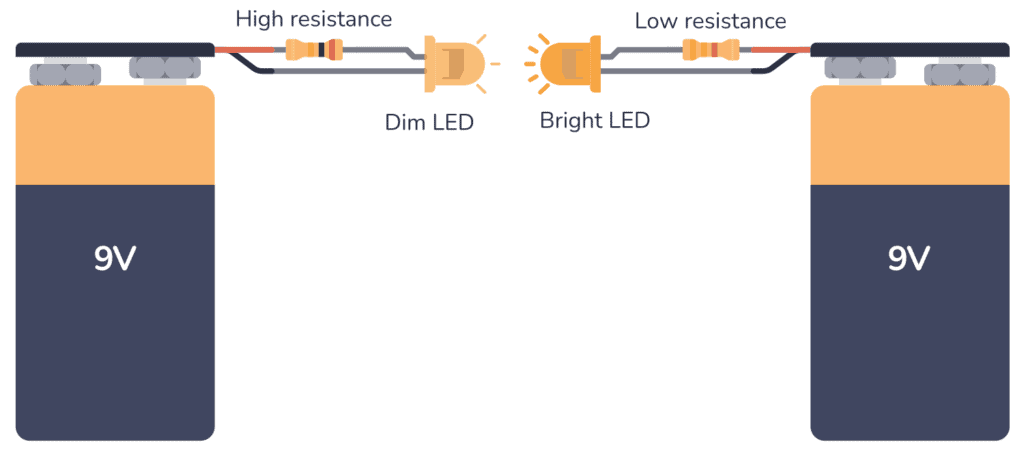
Learn To Work With Resistors
When I started learning electronics, it seemed to me like resistors were just randomly placed around a circuit and I thought that you didn’t really need them.
I first started understanding that maybe there was something to these resistors when I tried connecting an LED directly to my 9V battery. At first, it seemed to work fine. The LED lit up brightly. But then, after a few seconds, the LED turned really hot. So hot I almost burned my fingers. Then it died.
Learning to work with resistors is important in electronics. One fundamental skill you should learn is how to use Ohm’s law. It describes the relationship between the voltage, resistance, and current:
V = R * I
- V is the symbol for voltage.
- I is the symbol for current.
- R is the symbol for resistance.
It is the only formula in electronics that I use pretty much every time I design a circuit.
You can switch it around and get R = V/I or I = V/R. As long as you have two of the variables, you can calculate the last. Instead of memorizing it, you can use Ohm’s law triangle to find the three formulas:
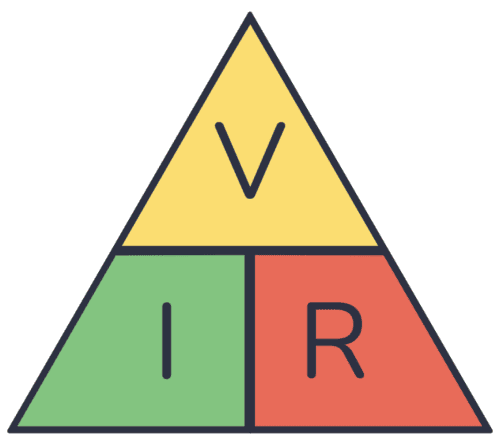
Use your hand to cover the letter you want to find. If one of the remaining letters is above the other, it means dividing the top one by the bottom one. If they are next to each other, it means multiply one with the other.
For example to find the formula for current, place your hand over the I. Then you’ll see the V over the R, which means you find current by dividing V by R.
Resistors in Series
If two or more resistors are connected in series it means that they are connected after one another, like this:

You can look at resistors in series as one resistor if you find the combined resistance of the two. This is useful for example if you want to find the current flowing in this circuit.
To find the combined resistance, simply find the sum of all the resistance values in series.
Resistors in Parallel
If two or more resistors are connected in parallel it means they are connected next to each other, with both pins of one connected to each pin of the next, like this:

Resistors connected in parallel can also be simplified into one resistance value, but they are a little more complicated to calculate than resistors in series. Check out the article series and parallel circuits to learn more.
Resistor Circuit: The Voltage Divider
The voltage divider uses two resistors to convert – or divide – a voltage into a smaller voltage. It’s used in both simple and advanced circuits all the time. Here’s the basic structure:
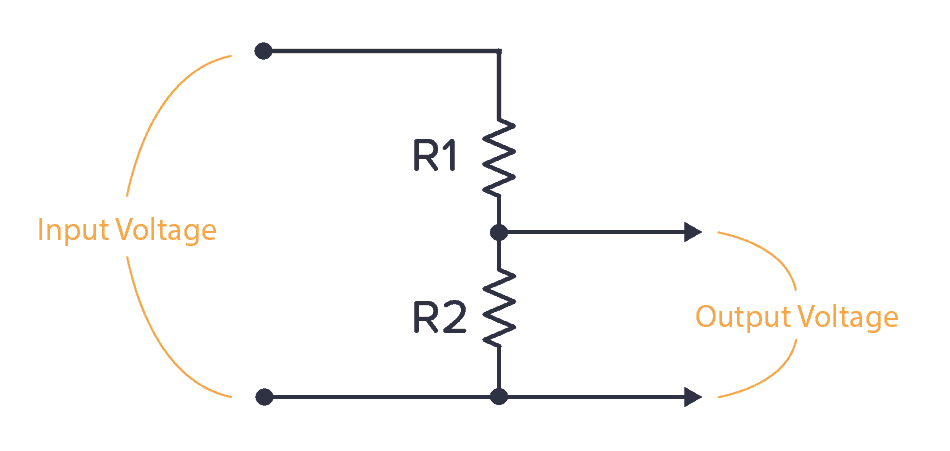
It is useful for example for reading sensors like thermistors and photoresistors since it converts an unknown resistance into a voltage. Or to reduce the volume of an audio signal via a potentiometer.
Here’s an example circuit where a voltage divider is used to convert light into a voltage:
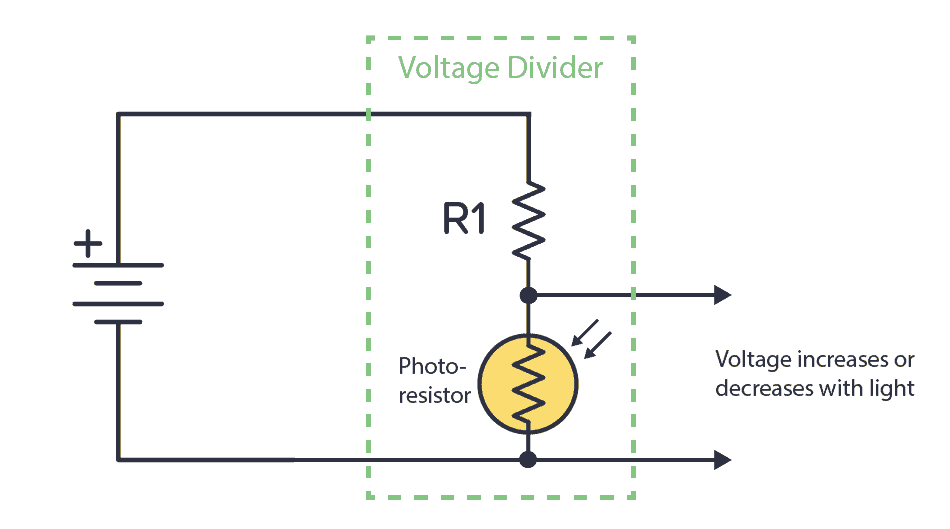
How To Learn About Using Resistors?
Resistors help you set the brightness of an LED, add time delays together with capacitors, convert sensor values such as light into voltage, and much more. The more you learn about electronics, the more obvious it becomes how important this component is.
To learn how to use resistors in circuits, I recommend you build several basic circuits that use resistors, and then experiment with different resistor values. If you combine that with learning the basics of electronics, you’ve come a long way.
Then continue by learning to simplify complex circuits, and finally read up on Kirchoff’s laws.
If you have any questions, let me know in the comments below!
More Resistors Tutorials

10 Simple Steps to Learn Electronics
Electronics is easy when you know what to focus on and what to ignore. Learn what "the basics" really is and how to learn it fast.
